10 Bright Yellow Perennial Flowers to Add to Your Garden

This post follows our research editorial guidelines.

Perennials are a great addition to any garden, but yellow flowers specifically add a unique dynamic to the space. This color is versatile as it works well as a bright yellow display or mixed with other flowers, enhancing other plants in the space while improving the overall color vibrancy.
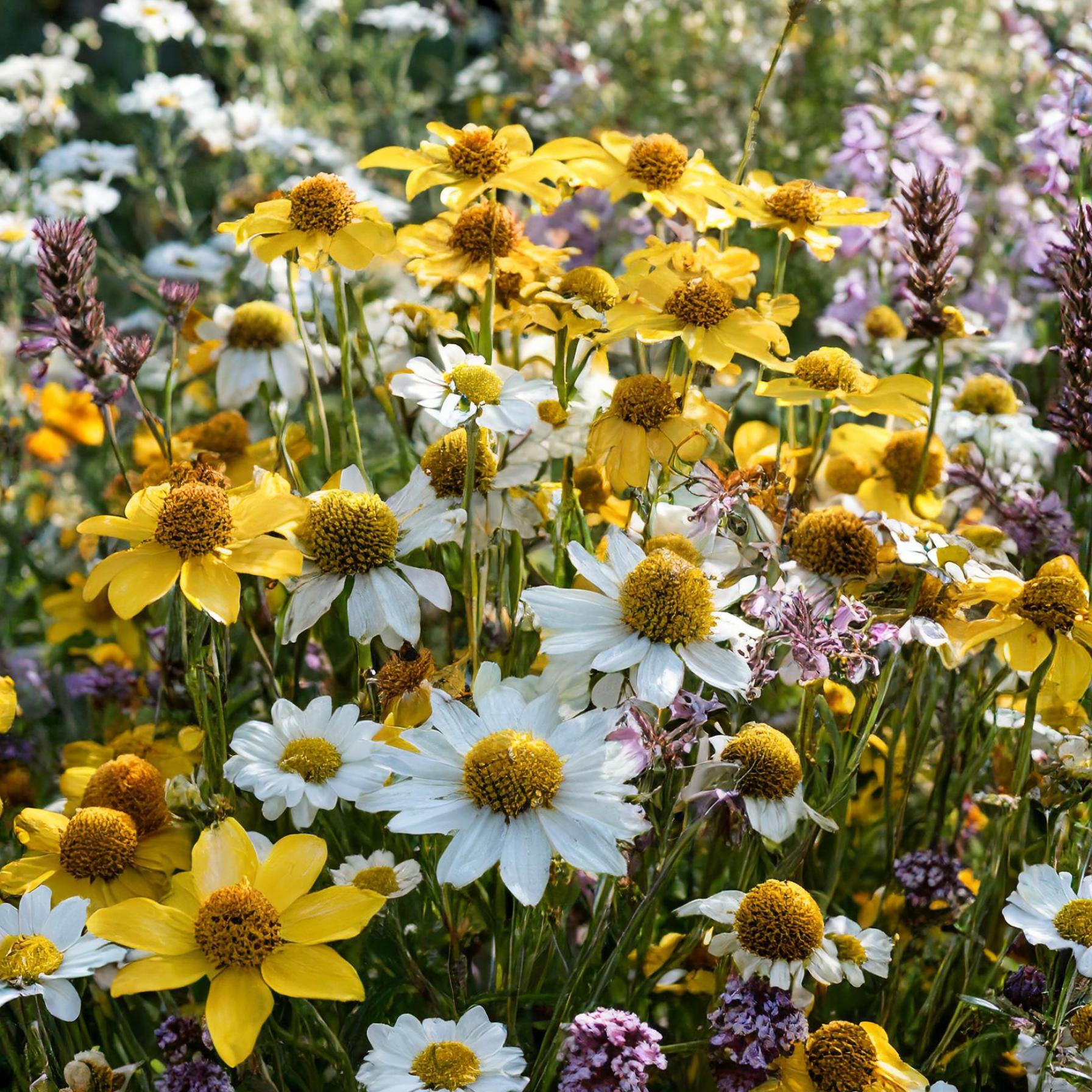
When on the subject of yellow flowers, the standard sunflower comes to mind. However, there are a plethora of flower types that adorn any garden, from bright to soft yellow, adding a pleasantness to your backyard.
“If you’ve never experienced the joy of accomplishing more than you can imagine, plant a garden.”
Robert Brault
I Think you might like these:
Here I’ve narrowed down 10 excellent options for you to consider when designing your yard. These flowers don’t demand too much in terms of growth needs, and they all complement one another. No matter how small or large your garden space is, I recommend adding these gorgeous perennial flowers.
Quickly Find The Yellow Perennial Flowers You’re Looking for
1. Sundrops (Oenothera fruticosa)
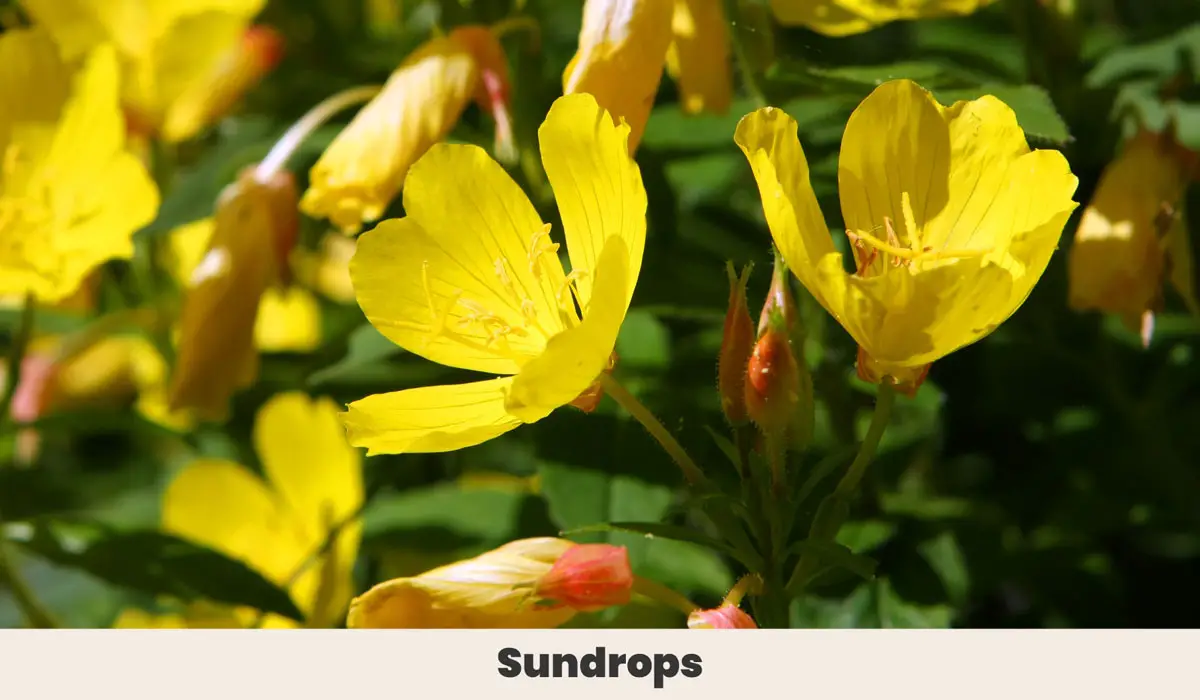
This is a fun and easy choice for someone new to gardening – but seasoned pros can enjoy this very undemanding flower too! Sundrops grow in bunches, producing small round flowers that are roughly 2 inches in diameter.
These gems are a tough species of plant that do fine with minimal amounts of water and fertilizer. Their growth isn’t hindered by tough terrain or rocky soil.
My go-to ground cover🍀
Not all flowers need to be tall. Ground covers like these bright yellow Sundrops add a sprawling canopy of flowers to your garden landscape. As with most ground covers Sundrops will thrive in a variety of soil conditions including sand, loam, and clay. Once the flowers dry up you’re left with these interesting little seed pods that appear translucent with the backdrop of a setting sun.
Initially, you can start off with seeds, but once you have a few flowers growing, you can expand your collection by splitting up clumps and planting them separately.
| Botanical Name: | Oenothera fruticosa |
| Growth Rate: | Fast |
| Native Range: | Eastern North America |
| Hardiness Zones: | 4-8 |
| Soil Needs: | Chalk, loam, sand |
| Blooming Period: | Late spring to early summer. |
| Water needs: | Low, average |
| Exposure: | Full sun to partial shade. |
2. Yellow Evening Primrose (Oenothera macrocarpa)
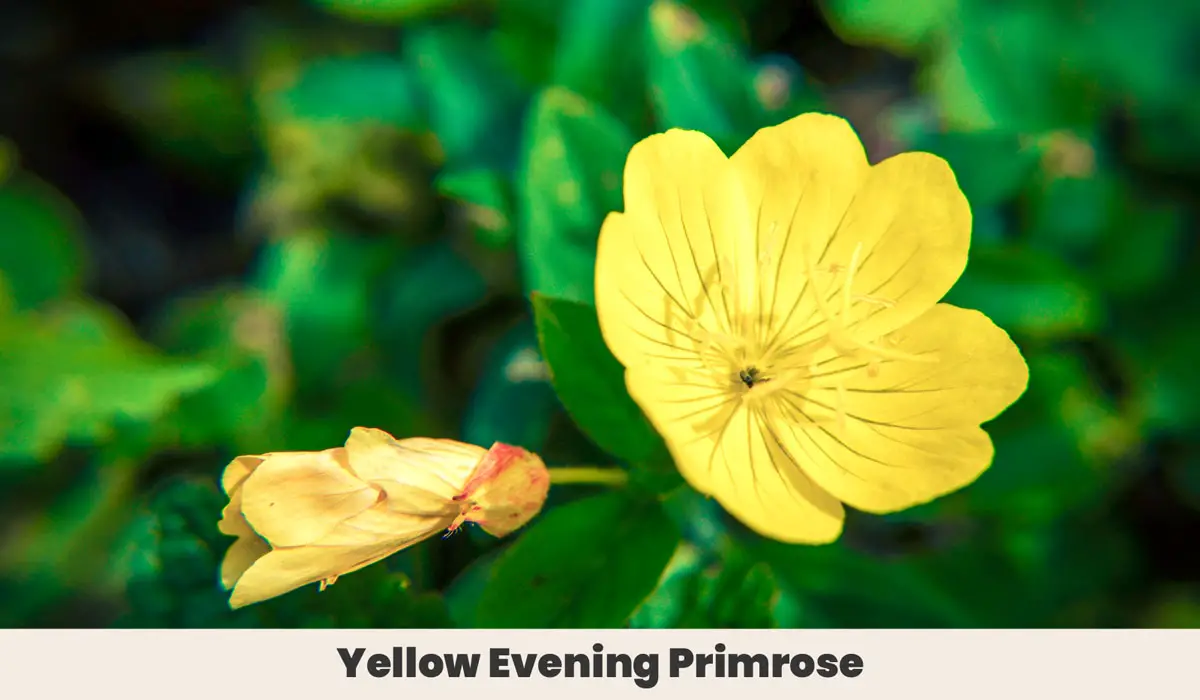
This is also known as the Missouri Primrose since it is native to the southern and central regions of America. This plant features long tubular flowers that are downward facing. It is a nocturnal plant, so its flowers bloom at night.
Keep in mind moths pollinate these plants, so you’ll want to separate them from other moth-sensitive plants.
| Botanical Name: | Oenothera macrocarpa |
| Growth Rate: | Fast-growing plant that can quickly reach its mature size |
| Native Range: | Southern and Central America |
| Hardiness Zones: | Zones 3-7 |
| Soil Needs: | Prefers medium loam, sandy loam, and limestone-based soils |
| Blooming Period: | Late spring to early summer. |
| Water needs: | This species of evening primrose has low water needs |
| Exposure: | Full sun |
3. Yellow Coneflower (Echinacea paradoxa)
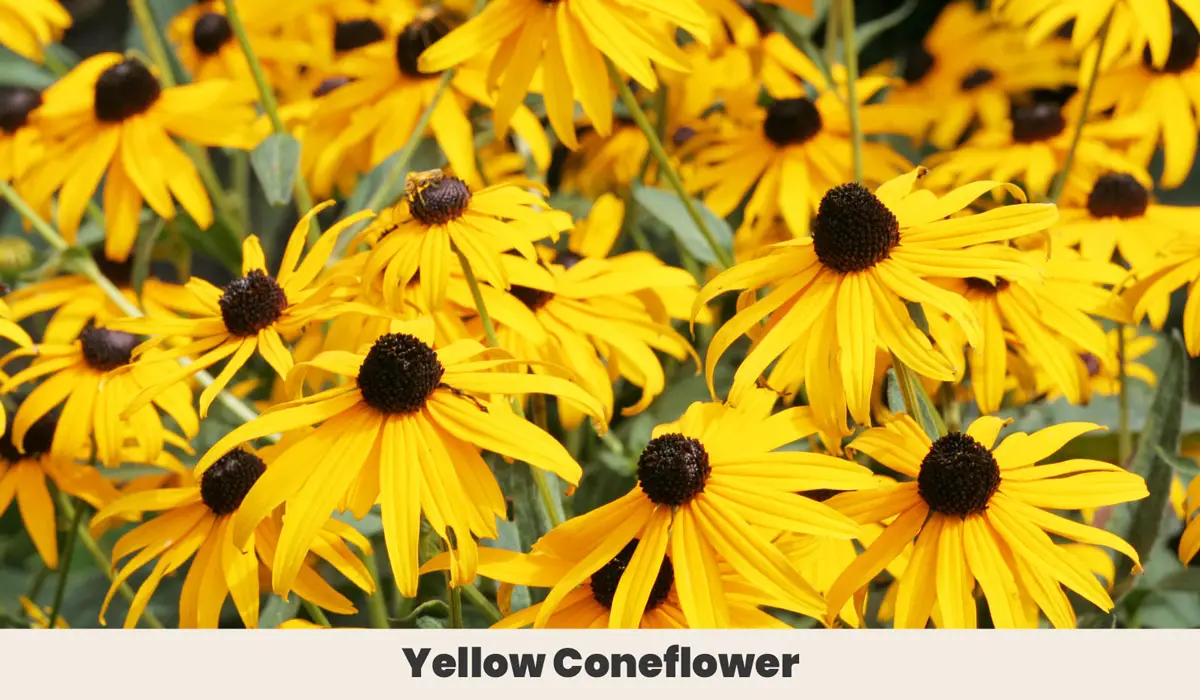
The Yellow Coneflower is a rare variety among related Echinacea’s produces large daisy-like flowers that can be 4-5 inches across. It is a tough plant that can withstand heat very well. The dark chocolate brown cone in the center of the flower makes it a unique site in any garden.
pollinator pick🦋
Yellow Coneflowers are excellent at attracting all sorts of pollinators to your garden including, bees, butterflies and even humming birds. By adding more pollinator-friendly plants like the Yellow Coneflower you enhance the overall health of your garden through cross-pollination.
Yellow Coneflowers grow in non-invasive clumps making them the perfect companion plant that won’t choke out or overshadow neighbouring plants.
| Botanical Name: | Echinacea paradoxa |
| Growth Rate: | Fast-growing |
| Native Range: | South and Central America |
| Hardiness Zones: | 5-9 |
| Soil Needs: | Echinacea paradoxa prefers well-draining soils, including chalk, loam, and sand. |
| Blooming Period: | Early to late summer |
| Water needs: | Low water needs, drought tolerant |
| Exposure: | Full sun |
4. Yellow Daylily (Hemerocallis lilioasphodelus)
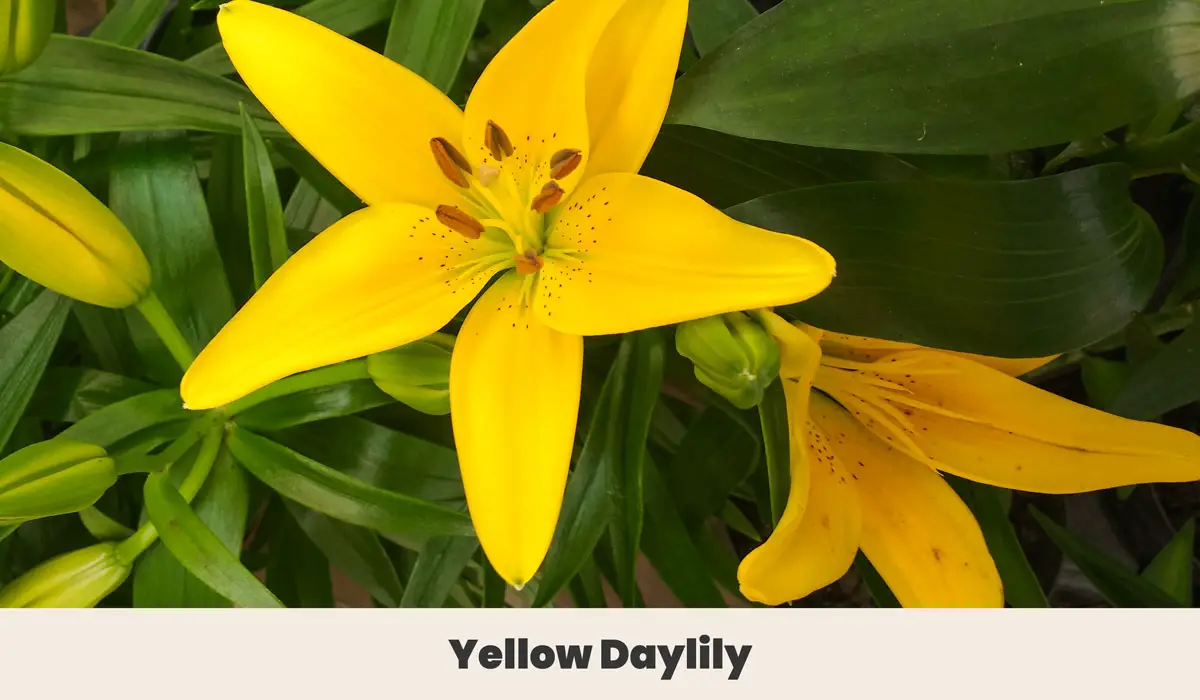
This plant has small trumpet-shaped flowers that are extremely fragrant. Its bright yellow color makes it a visual treat in any setting.
This plant also has an early bloom period, usually at the end of spring and early summer, making it perfect for that transition period when not many other flowers bloom.
| Botanical Name: | Hemerocallis lilioasphodelus |
| Growth Rate: | Medium |
| Native Range: | Southern America, Europe, Asia |
| Hardiness Zones: | 3-9 |
| Soil Needs: | Grows well in Ballyrobert — but can grow in any type |
| Blooming Period: | Early to mid-summer |
| Water needs: | Low |
| Exposure: | Full sun to partial shade |
5. Golden Yarrow (Eriophyllum confertiflorum)
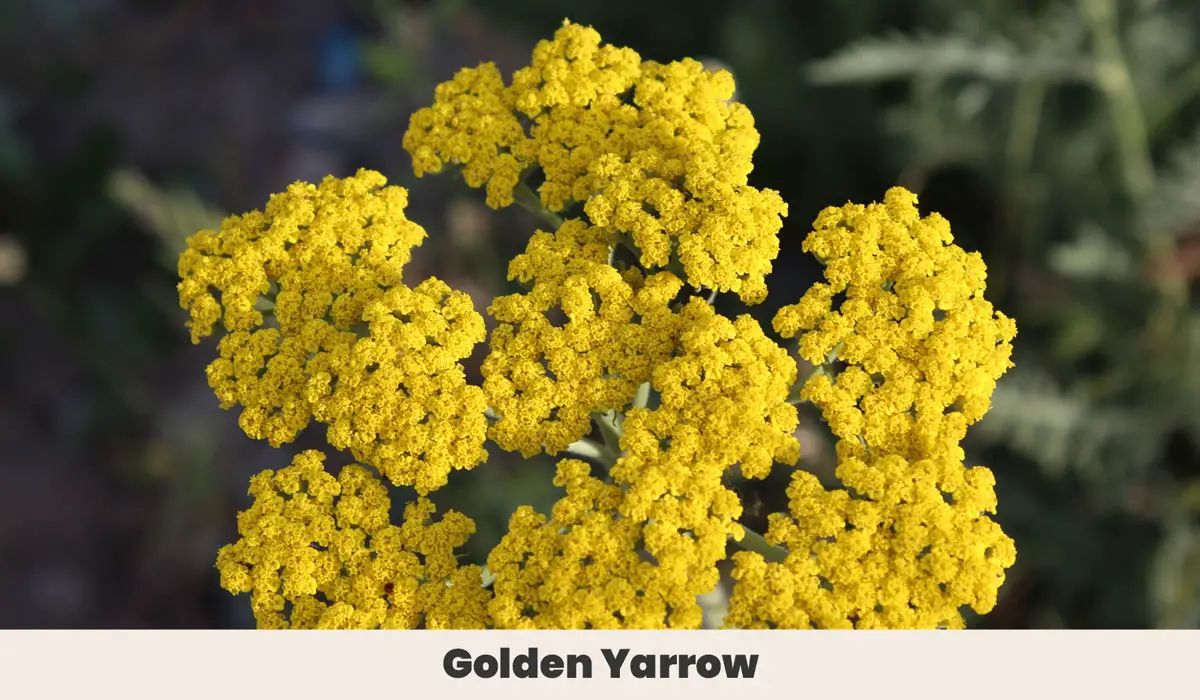
The Golden Yarrow can take many forms depending on how you prune it. It can be a colorful little shrub, or it can end up taking over a big empty space in your garden.
best for drought tolerance💧
If you live in a dry and arid region the Golden Yarrow sill soon become your best friend. Out of all the yellow flowers in this list the Golden Yarrow is best equipped to handle the heat and dry spells. Consider planting this flower if water conservation is a concern.
Beyond the natural bloom time, the silvery foliage of the Golden Yarrow adds seasonal interest to your typical green hues.
| Botanical Name: | Eriophyllum confertiflorum |
| Growth Rate: | Medium |
| Native Range: | California |
| Hardiness Zones: | 6-11 |
| Dangers: | None |
| Soil Needs: | Loam, sand |
| Blooming Period: | Late spring to early summer |
| Water needs: | Very low |
| Exposure: | Full sun |
6. Golden Columbine (Aquilegia chrysantha)
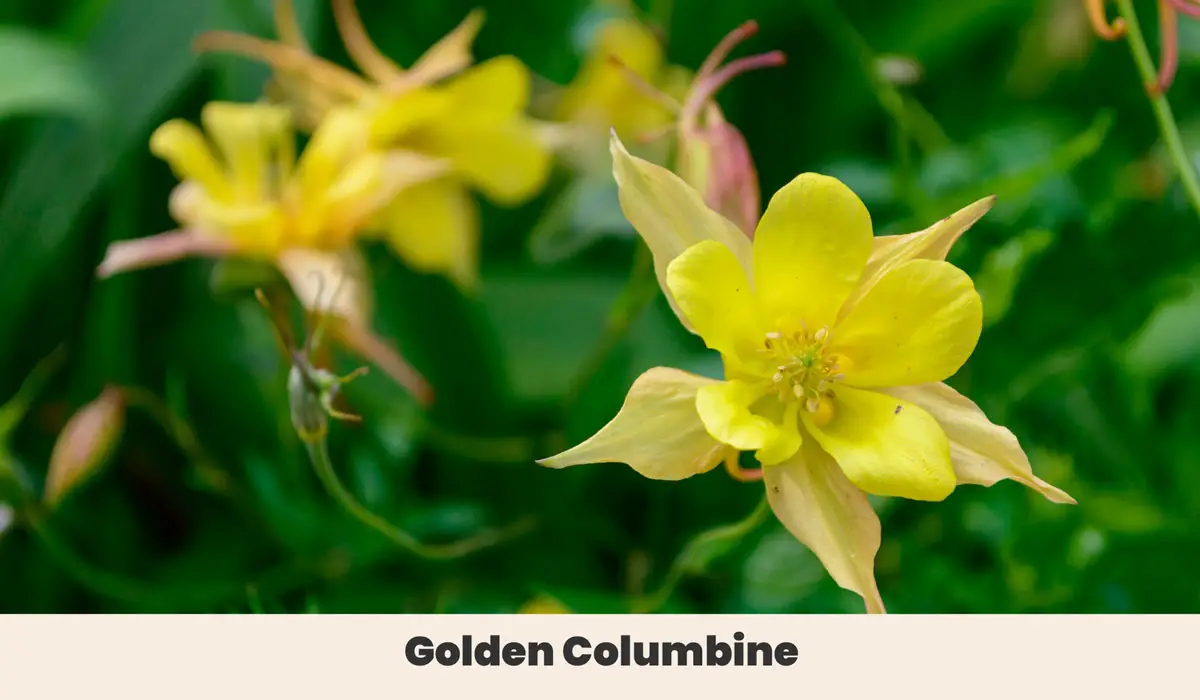
Being native to the arid regions of Utah through to Arizona, Golden Columbine will thrive through the summer heat. While it’s able to tolerate hot weather, the Golden Columbine is also surprisingly resilient during cold spells, staying hardy all the way down to Zone 3.
This flower is popular among pollinators like bees, butterflies, and hummingbirds. Try planting Golden Columbine among other shade-loving plants like the feathery plumes of the Astilbe or my personal favorite Coral Bells with purple foliage.
| Botanical Name: | Aquilegia chrysantha) |
| Growth Rate: | Medium |
| Native Range: | Southern states |
| Hardiness Zones: | 3-8 |
| Soil Needs: | Clay, loam, sand |
| Blooming Period: | Late spring to early summer. |
| Water needs: | low |
| Exposure: | Full sun to partial shade |
7. Bottle Rocket (Ligularia)
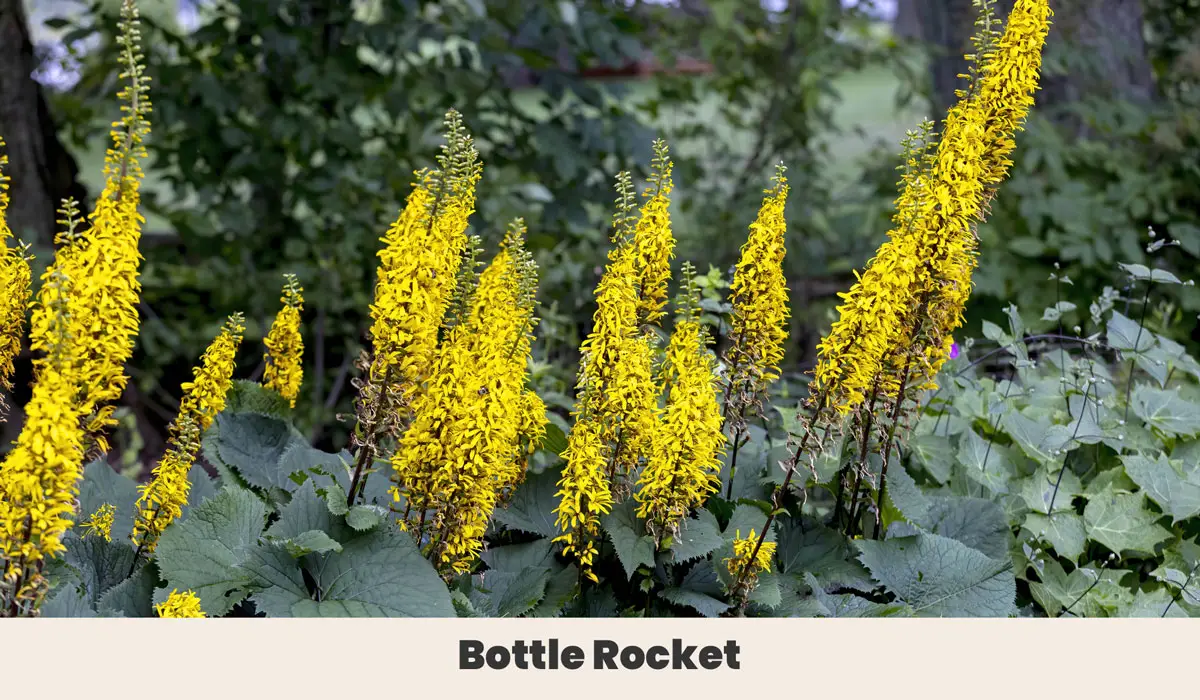
This plant can grow to nearly a meter tall and has large flowers in vertical cones. This is best suited to large outdoor spaces with plenty of light and room to reach its full potential.
Challenges Ahead: 🐌
While Bottle Rockets are easy to care for under the right conditions, watch out for hungry snails. Out of all the flowers in this list, Bottle Rockets are most susceptible to snails and slugs. Check the leaves regularly to keep the damage at bay.
Bottle Rocket flowers can grow even if there isn’t a lot of light. You can plant these bright yellow flowers among your shade-loving ferns and hostas.
| Botanical Name: | Ligularia |
| Growth Rate: | Medium |
| Native Range: | China, Japan |
| Hardiness Zones: | 4-9 |
| Soil Needs: | Clay, loam |
| Blooming Period: | Late summer |
| Water needs: | Average |
| Exposure: | Partial to full shade |
8. St. John’s Wort (Hypericum perforatum)
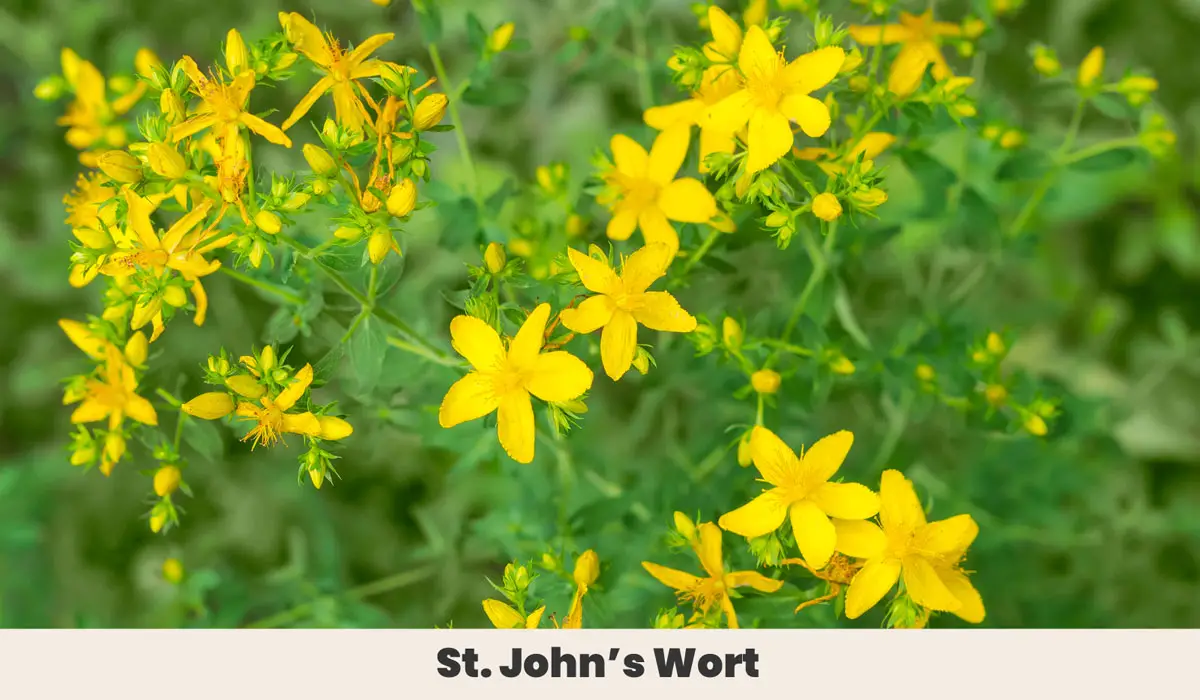
St. John’s Wort has spread widely over the years. In some regions, it’s even considered a weed. Next time you’re looking at the St. John’s Wort flower try holding a petal up to the light. You will see tons of glands filled with essential oils.
These oils have been prized in herbal remedies but can also cause issues for grazing wildlife. It’s no wonder that some consider it a weed.
| Botanical Name: | Hypericum perforatum |
| Growth Rate: | Medium |
| Native Range: | Europe, North Africa, Western Asia |
| Hardiness Zones: | 3-8 |
| Soil Needs: | Clay, sand, loam |
| Blooming Period: | Mid to late summer |
| Water needs: | Average |
| Exposure: | Full sun to partial shade |
9. Prairie Sun (Rudbeckia hirta)

The daisy-like flower on this plant adds a lot of color as the flower has shades of yellow, orange, and mahogany. The Prairie Sun grows tall flowers around 2 feet tall. Try planting in the middle or back section of garden beds for completing heights.
Prairie Sun (Rudbeckia hirta) is a winner in its category receiving the esteemed All-America Selections (AAS) award for its distinct qualities like drought tolerance and disease resistance.
| Botanical Name: | Rudbeckia hirta |
| Growth Rate: | Long |
| Native Range: | Midwest |
| Hardiness Zones: | 3-8 |
| Soil Needs: | Clay, loam |
| Blooming Period: | Mid to late summer |
| Water needs: | Low |
| Exposure: | Full sun |
10. Lance-Leaved Coreopsis (Coreopsis lanceolata)
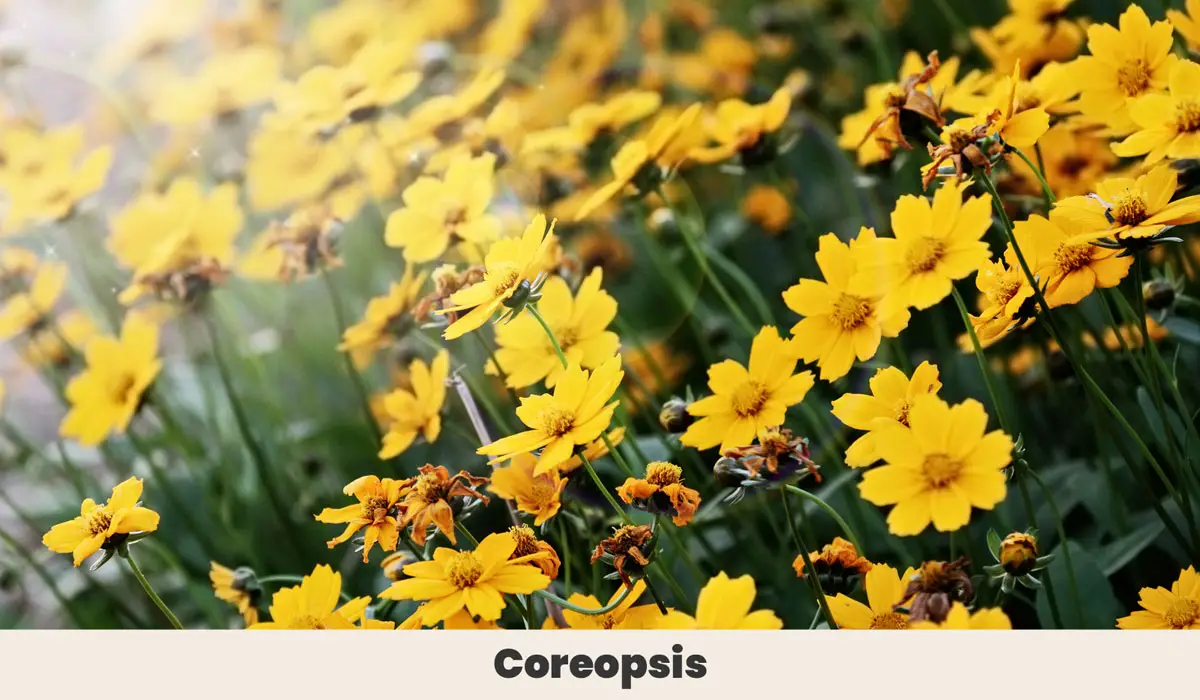
These plants grow small daisy-shaped flowers with lanced leaves. They have the best impact when grown in larger colonies, adding plenty of color to your garden with their spring-to-summer blooming times.
This flower is drought-resistant and hardy down to USDA zone 4. Try growing Coreopsis among tall ornamental grasses, their fine texture and movements will complement the bright buttercup flowers.
| Botanical Name: | Coreopsis lanceolata |
| Growth Rate: | Medium |
| Native Range: | Southern states |
| Hardiness Zones: | 4-9 |
| Soil Needs: | Chalk, loam, sand |
| Blooming Period: | Spring to early summer |
| Exposure: | Full sun |
Final Thoughts
Growing these yellow flowers is easy as they are tough plants that can withstand harsh conditions.
Being perennial plants, they provide you with beautiful flowers for many years to come. However, some of these can be invasive, especially if you have delicate flowers in the area.
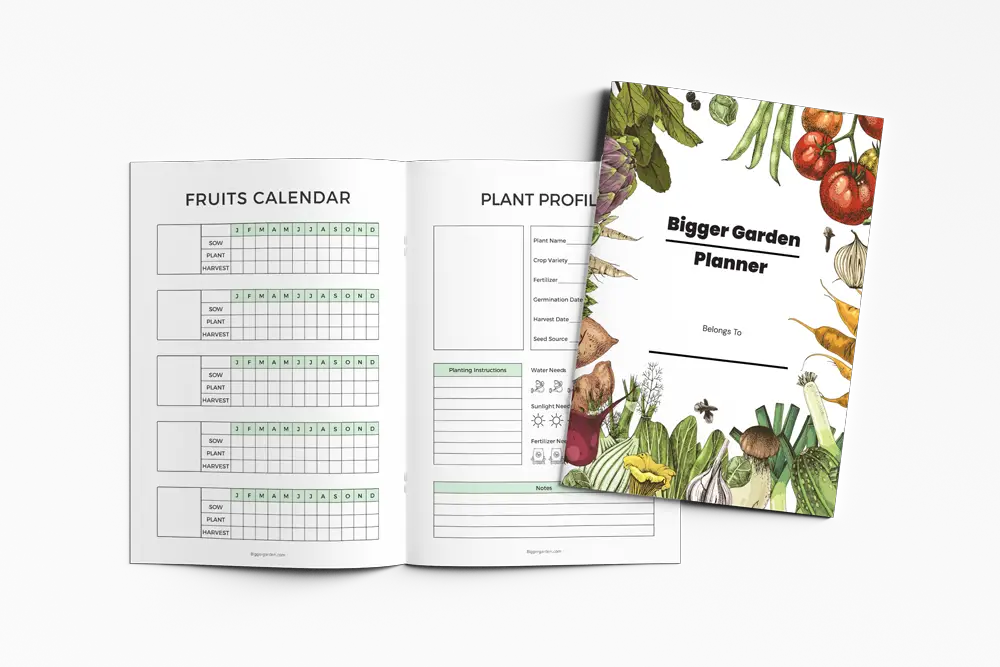
Before you go!
11 Flowering Plants for a Small Beautiful Balcony
The Hidden Benefits of Adding Night Blooming flowers to your garden
11 Types Of Wildflowers That Will Grow In Your Zone + Growing Guides
11 Fall Blooming Perennials for Your Garden (Fall Flowers Perfect For Autumn)